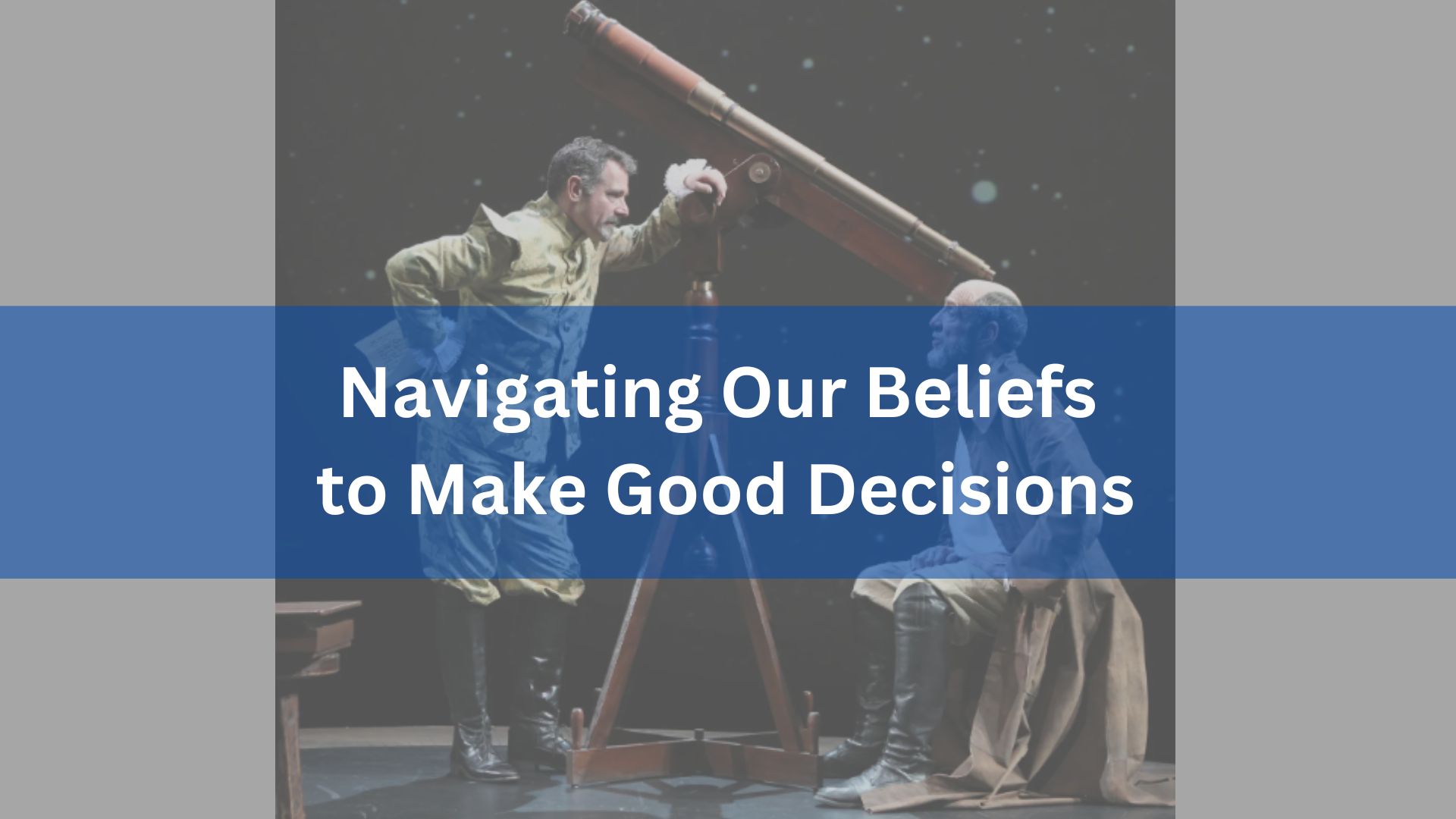
Today’s blog post is by Dr. Giovanni Siepe
Galileo’s Legacy: Modern Science
“I believe in Humanity, which means to say I believe in human reason.”
This powerful quote from Berthold Brecht’s play ‘Life of Galileo’ deserves some consideration. I agree with Galileo, of course, in his determination to believe in reason and his unshakable faith that rationality should be our compass in the pursuit of truth and in decision-making.
Galileo, the physicist, mathematician, and astronomer, is hailed as the progenitor of Modern Science. Before him, the description and understanding of the physical world came from dogma dictated by the Church and Aristotelian philosophy.
What Galileo revolutionized was the ability to validate hypotheses (theories) through observation. Observation confirms that a theory could accurately predict the outcome of an experiment.
This approach came to be known as the “experimental method”.
In essence, the work of a scientist is to use a method supported by a solid theory to continually test their beliefs (mental models) and check their validity.
Managerial Decision-Making: Navigating the Terrain of Beliefs
At the heart of managerial work lies decision-making. Managers, like scientists, are tasked with constantly assessing their beliefs and making informed decisions.
However, if we assume that managers rely solely on “rationality” to validate their mental models, we oversimplify the process. Rationality is often perceived as the ultimate problem-solving tool. We believe, at the same time, that emotions are an obstacle to our rationality and therefore must be “fought” or suppressed.
The astonishing truth is that, when faced with certain logical problems, we all tend to make the same mistakes, regardless of education or background. This is called a “cognitive tunnel”. In the same way that our eyesight can be fooled by optical illusions, our brains can be prey to “cognitive illusions”. These illusions, deeply rooted in emotions, shape our mental models. To challenge them, we must learn to harness the power of our emotions.
It’s crucial, especially for decision-makers, to acknowledge that our reality is made up of our mental models. Our mental models are constructed through language, which in turn dictates how we think. So if we want to understand what our mental models are, we must do it through language.
We use language to describe reality and it is through language that we can change reality.
Dr. Goldratt’s Theory of Constraints: Breaking Through Mental Barriers
The most revolutionary part of Dr. Goldratt’s Theory of Constraints (TOC) was the introduction of its Thinking Processes.
The most important Thinking Process is called the Conflict Cloud that provides a linguistic framework based on cause-and-effect logic. This is not logic in the mathematical sense because the cause-and-effect connections are influenced by emotions. All the Thinking Processes are based on this kind of logic.
As a general observation we can say that all the “technical” solutions that Dr. Goldratt developed stem from the relentless interrogation and invalidation of limiting assumptions (mental models)—what we have come to call our Human Constraint.
The Persistence of Belief: Exploring Emotional Influences
The persistence of beliefs, such as those of flat earthers, underscores the profound influence of emotions on our mental models. People choose to believe the earth is flat, despite scientific evidence to the contrary. Their adherence to a flat Earth ideology is deeply rooted in their emotions.
Leaders and managers must continually interrogate their mental models to solve issues, make good decisions and unlock breakthrough solutions for their organizations. Given that language significantly shapes our mental constructs, adopting of Thinking Processes from the Theory of Constraints should be standard practice.
PHYSICS AND MENTAL MODELS: THE QUANTUM MECHANICS CLOUD

To find out more about ten guided steps to a systemic leap ahead for your company, contact Angela Montgomery at intelligentmanagement@sechel.ws
SCHEDULE AN INTRODUCTORY CALL WITH US
Intelligent Management works with decision makers with the authority and responsibility to make meaningful change. We have helped dozens of organizations to adopt a systemic approach to manage complexity and radically improve performance and growth for 25 years through our Decalogue management methodology. The Network of Projects organization design we developed is supported by our Ess3ntial software for multi-project finite scheduling based on the Critical Chain algorithm.
See our latest books: From Silos to Networks: A New Kind of Science for Management from Springer, Moving the Chains: An Operational Solution for Embracing Complexity in the Digital Age by our Founder Dr. Domenico Lepore, and ‘Quality, Involvement, Flow: The Systemic Organization’ from CRC Press, New York by Dr. Domenico Lepore, Dr. .Angela Montgomery and Dr. Giovanni Siepe.





Leave a Reply